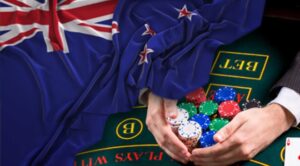Key Moments:
- 1,122 people visited Kangwon Land at least 100 times in 2023, marking a return to pre-pandemic figures
- The most frequent visitor entered the casino 159 times from October last year to this October
- Cumulative sales reached 4.66 trillion won ($3.3 billion) over five years, but only 0.4 percent was spent on addiction prevention
Uptick in Repeat Visits Raises Red Flags
Kangwon Land, situated in Jeongseon, Gangwon Province, is once again seeing a sharp increase in high-frequency patrons. According to data provided by Rep. Heo Sung-moo of the Democratic Party of Korea, 1,122 individuals visited the casino at least 100 times across 2023. This number had dropped steeply during the pandemic, falling from 1,604 in 2020 to only four in 2021, then rising to 209 in 2022 and 951 in the previous year.
Patterns of Gambling Intensify
Analysis of casino entry data from October last year to this October revealed the most frequent patron visited 159 times within the year. The 100th most frequent customer recorded 143 visits within the same timeframe. Entering more than 100 times annually implies visiting once every three days, while top patrons nearly visit every other day. Given the casino’s hours from 10 a.m. to 6 a.m. the following day, the pattern suggests many of these customers spend virtually entire days inside, taking brief breaks before returning.
Experts note that gambling at a casino more than four times monthly signals a high risk for developing addiction, making over 100 annual visits particularly alarming. The American Psychiatric Association’s DSM-5 lists needing to wager larger sums to feel satisfied, repeatedly gambling to recover losses, and compromising work or relationships as hallmark signs of gambling addiction.
Addiction Measures Viewed as Insufficient
Kangwon Land requires those visiting more than 60 days per year to complete a mandatory prevention program that highlights gambling risks and outlines internal policies. Critics argue, however, that the program serves mainly as a formality and facilitates continuous attendance by frequent gamblers.
Rep. Heo’s office inquired whether the company tracks high-frequency customers attending addiction treatment programs. Kangwon Land reported it does not possess such information. “This shows that Kangwon Land doesn’t even know how many of its frequent visitors fall into the high-risk category,” Heo said.
A national survey indicated that 54 percent of Kangwon Land’s patrons displayed signs of gambling addiction, a figure nearly ten times the adult national average of 5.5 percent.
Financial Allocations Highlight Priorities
| Cumulative Sales (past 5 years) | Amount Spent on Addiction Prevention | Prevention Budget as % of Sales |
|---|---|---|
| 4.66 trillion won ($3.3 billion) | 19.2 billion won | 0.4% |
Despite posting cumulative sales of 4.66 trillion won ($3.3 billion) in the five-year period, Kangwon Land allocated just 0.4 percent of that amount – or 19.2 billion won – towards addiction prevention efforts.
Heo called on the company to implement more robust measures. “Rather than relying on perfunctory education sessions, Kangwon Land should strengthen its entry restrictions and expand its prevention budget to address the real problem of gambling addiction,” he said.
- Author


